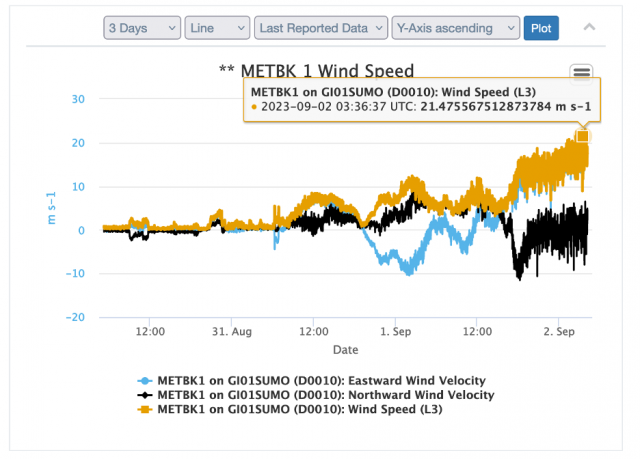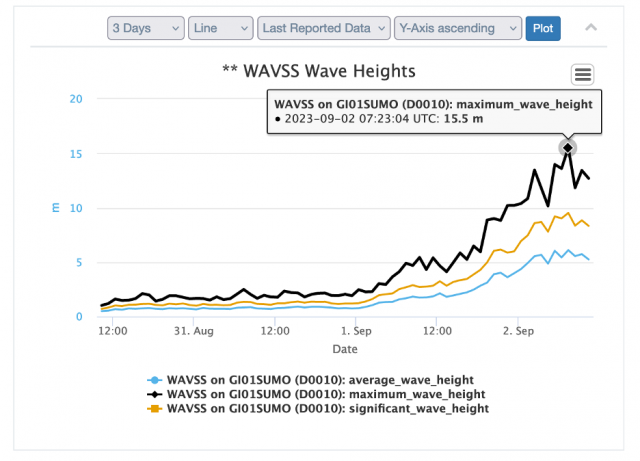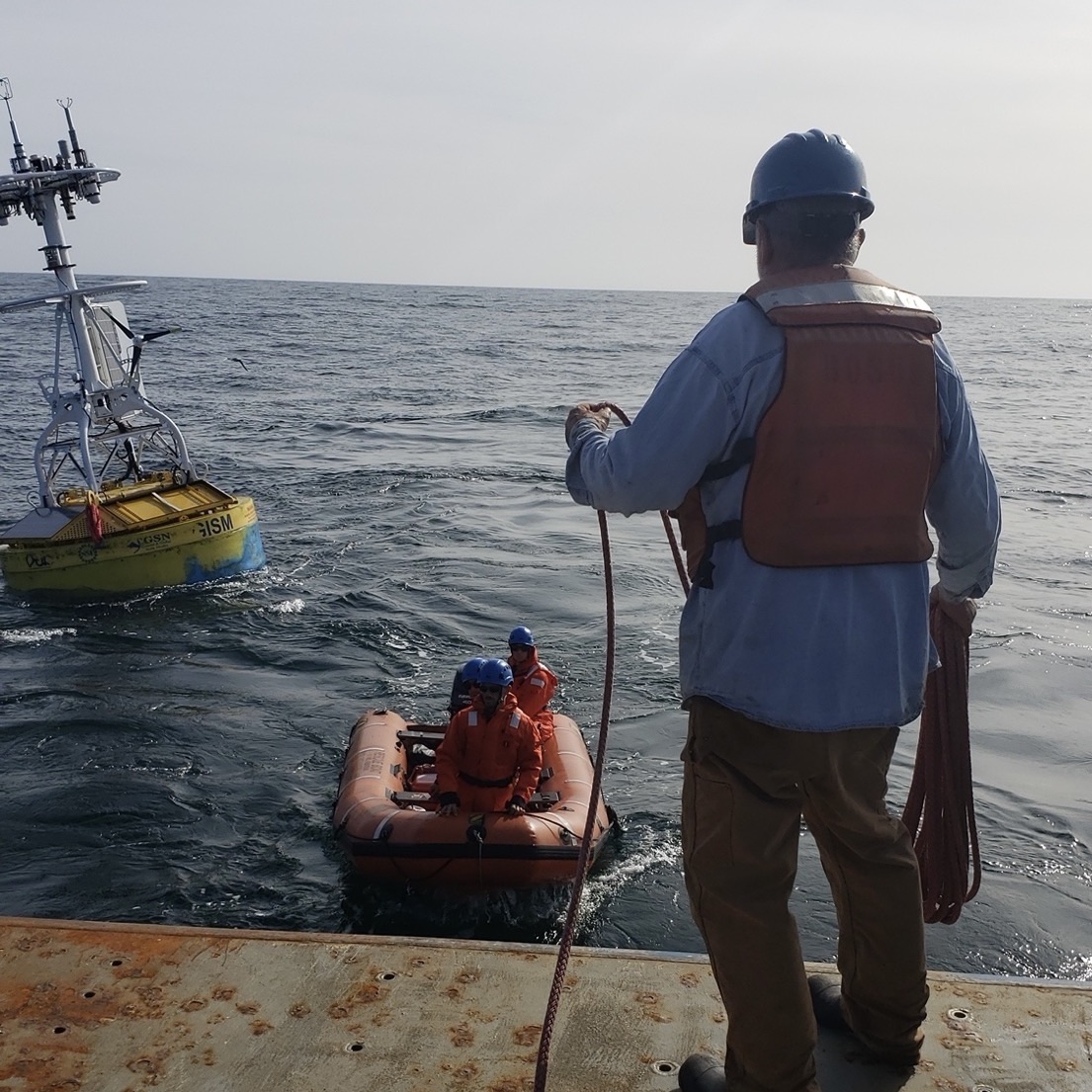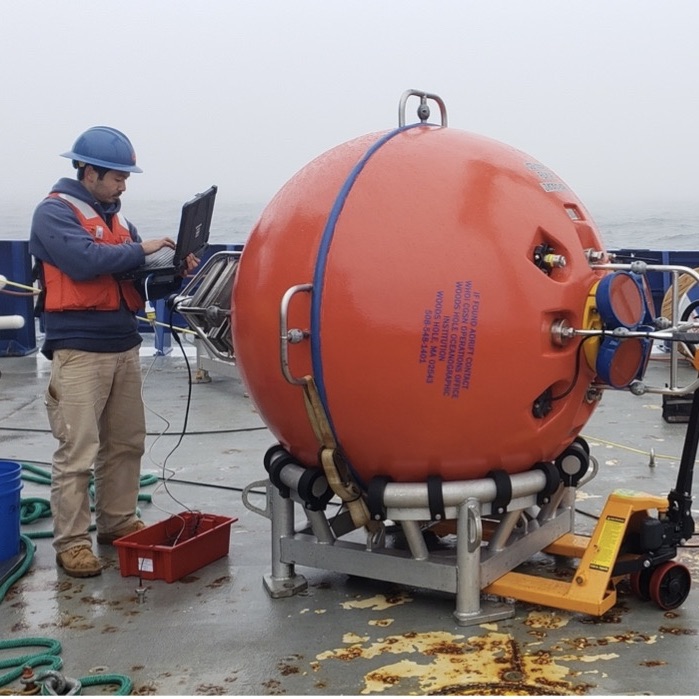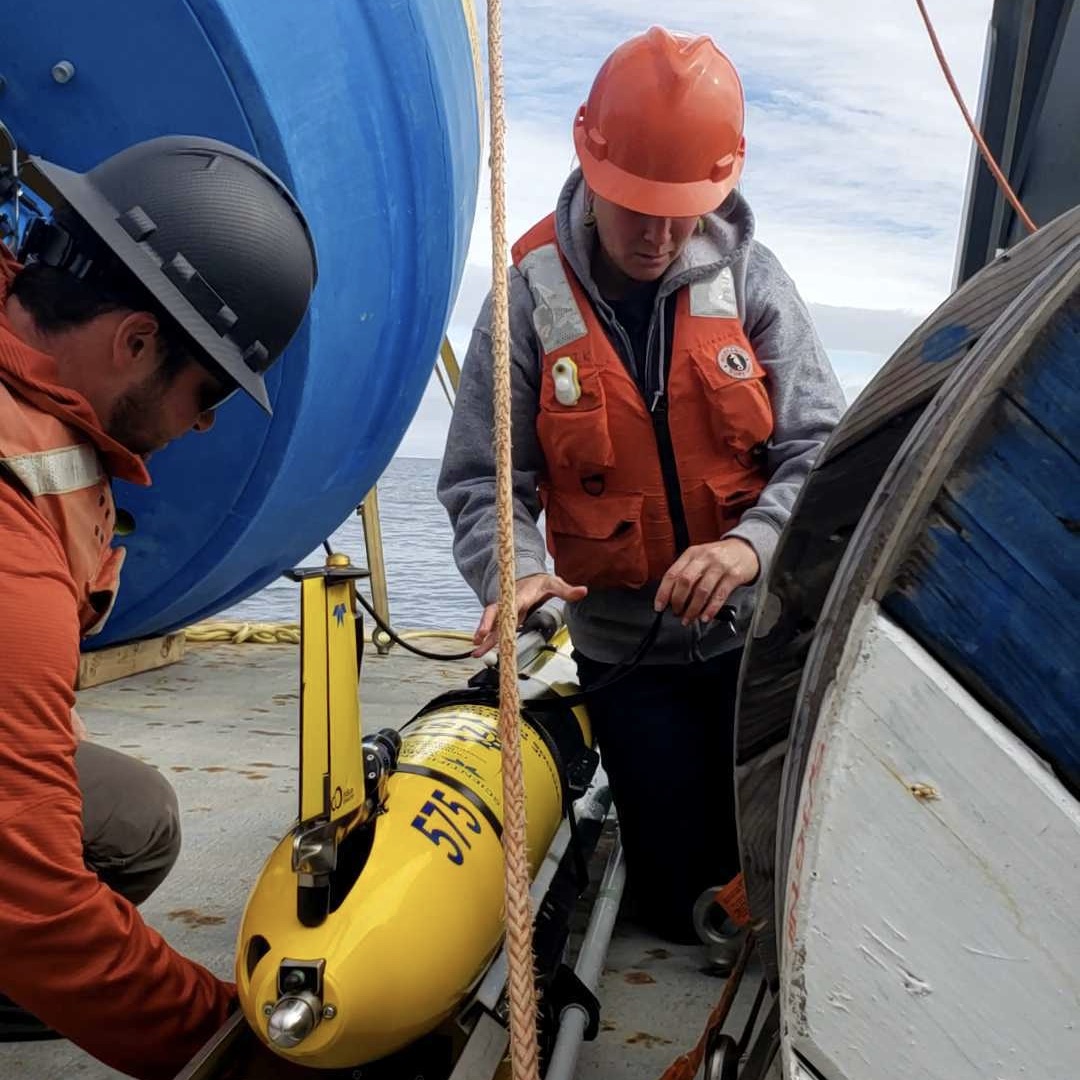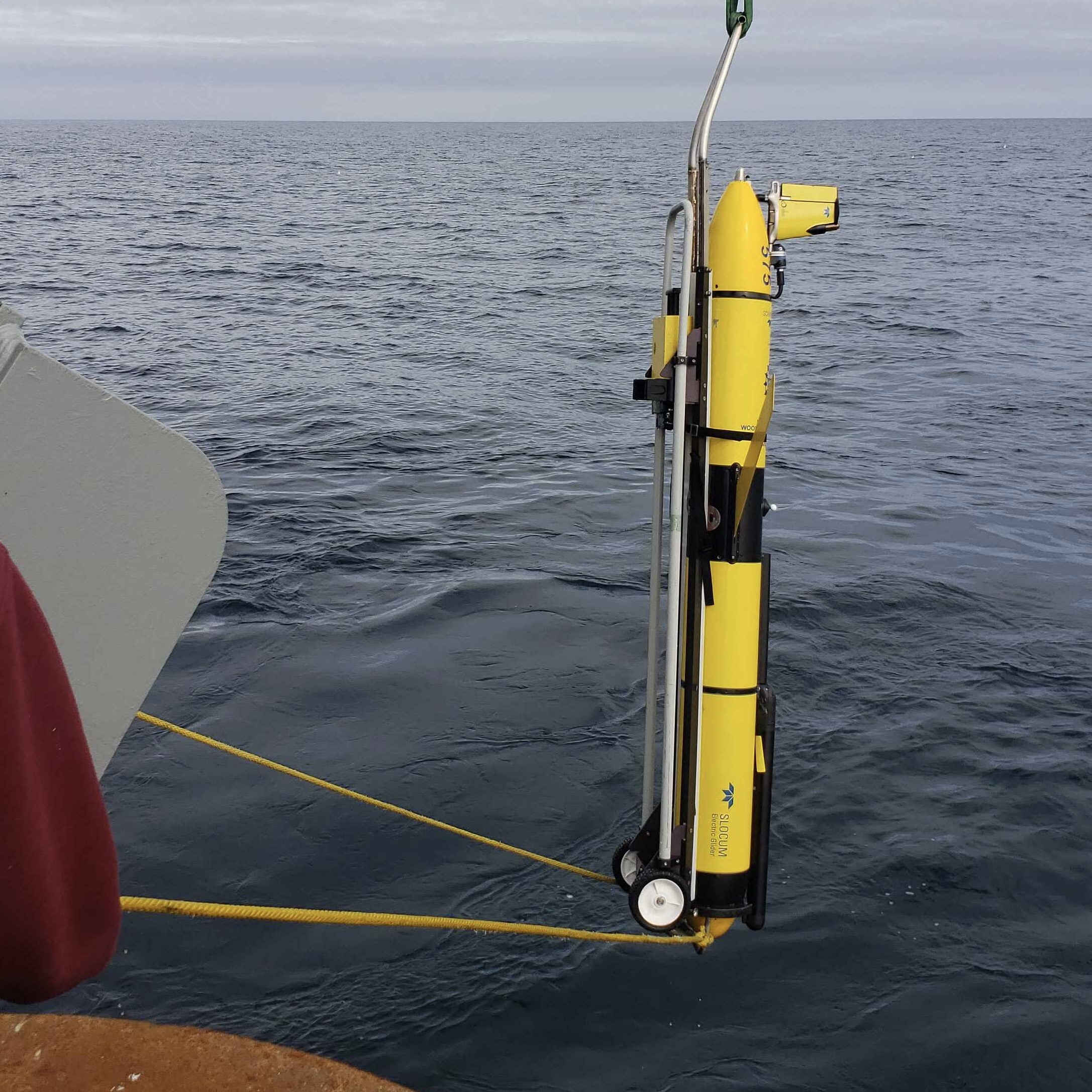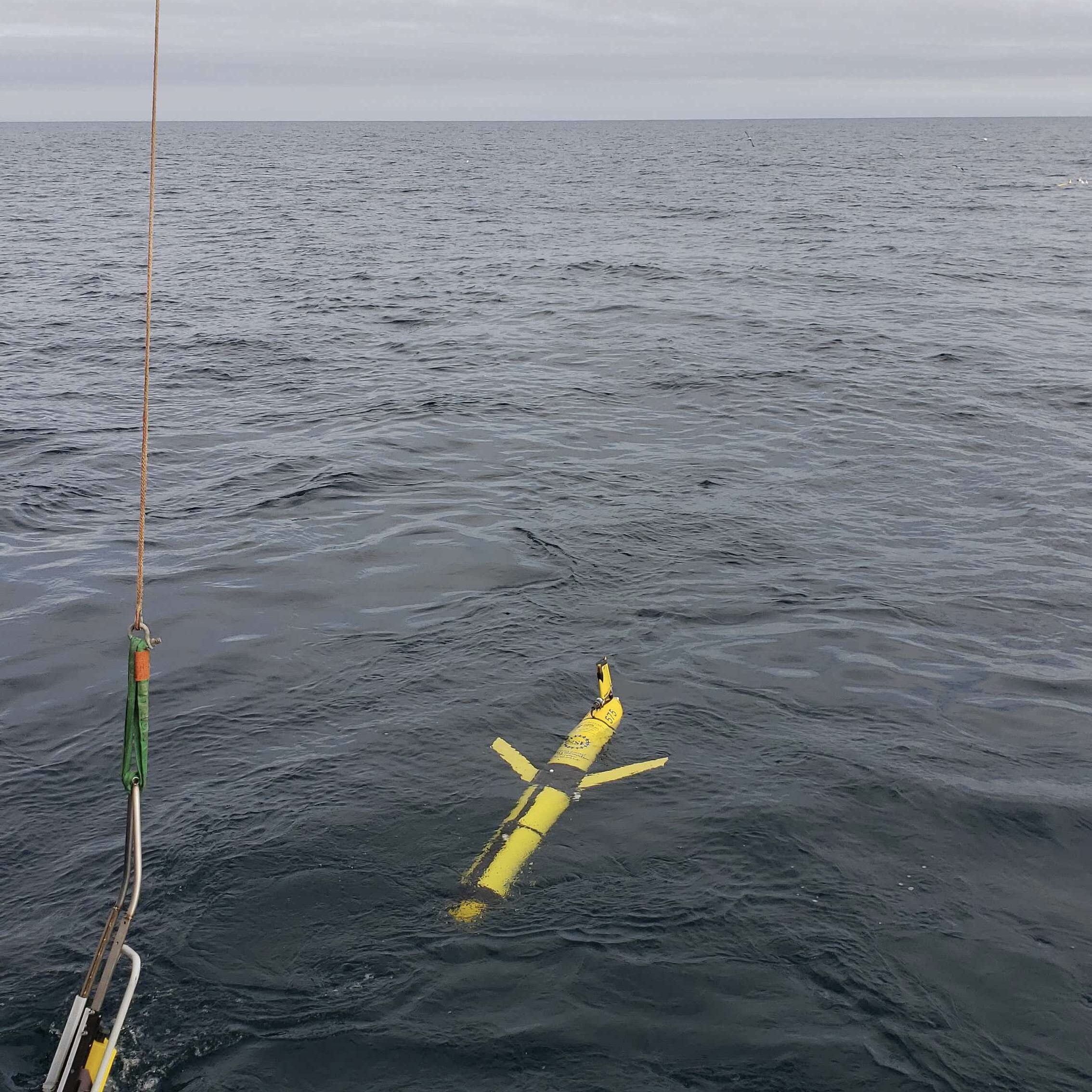Mission Accomplished Despite High Seas, Strong Winds
The Irminger 10 Recovery and Deployment Expedition had to keep a close eye on weather conditions. After arriving at the Irminger Sea Array site aboard the R/V Neil Armstrong, the ship was forced to take shelter in Prince Christian Sound off Greenland for two days to avoid 21.5 m/s (42 knot) winds and waves measuring more than 15.5 meters high (50 feet) as measured by the OOI Surface buoy (SUMO-10) meteorological systems.
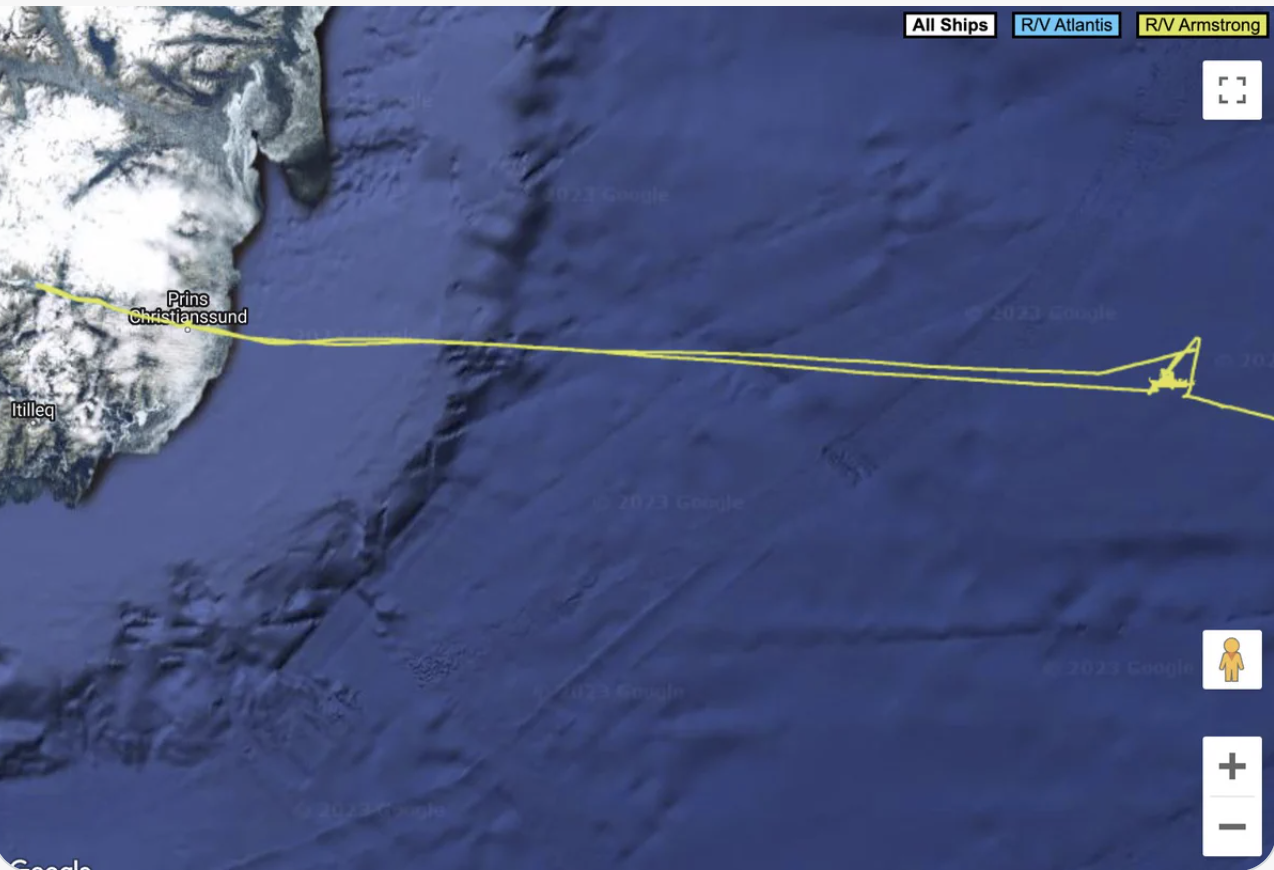
The team returned to the site once conditions settled down enough to work safely. The team monitored the weather carefully planning operations that fit the varying conditions and were able to squeeze out enough safe, workable days to accomplish the cruise’s primary objectives, and then some.
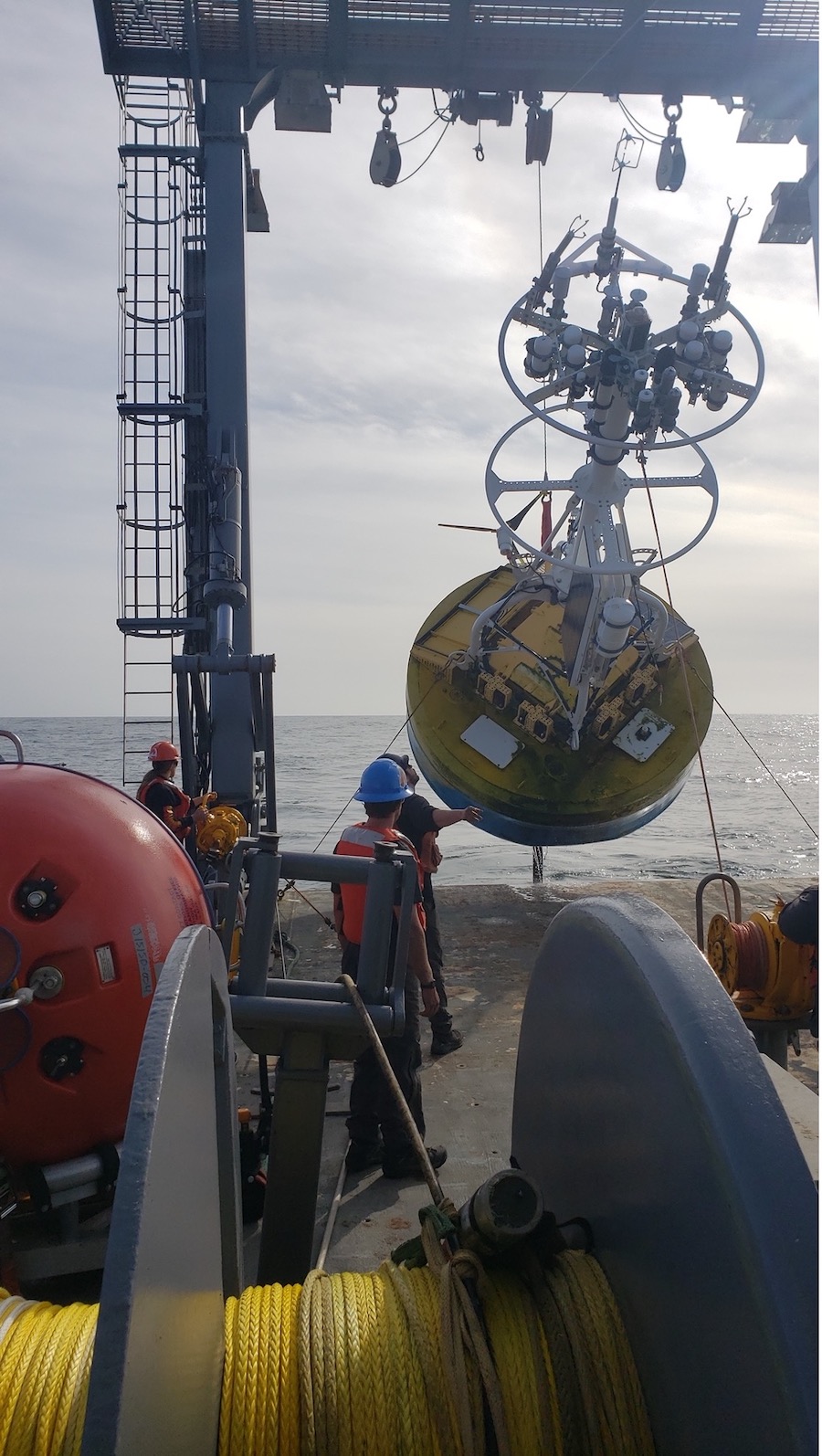
The ship departed the Irminger Array on September 12th and headed for the last CTD (Conductivity, Temperature, and Depth) measurement at OSNAP Station M4 on the way home to Woods Hole, MA, which completed the cruise objectives. Despite the obstacles posed by conditions in this windy and wild part of the norther Atlantic, four moorings were deployed and recovered. Two open ocean gliders and one global profiling glider were deployed. CTD casts for instrument cross calibration were made during each deployment/recovery. Meteorological surveys were conducted and ancillary CTD casts to support the OSNAP program were made. In addition, a significant number of marine mammal sightings were recorded.
Conditions didn’t cooperate as the team headed home. The Captain of the Armstrong had to carefully pick a transit to avoid Hurricanes Lee and Margot turning up the Atlantic.
Said Chief Scientist John Lund, “The success of this cruise is a result of the tremendous teamwork from the Armstrong crew, shoreside support, and the OOI and CRL engineers and technicians who prepared and deployed the Irminger-10 assets. Their hard work has made possible the data that will be sent home for the next year.”
The ship and its hard-working team are expected to arrive back at the Woods Hole dock on September 21. More details about the expedition and images and video are available here.

